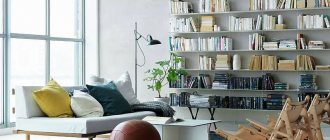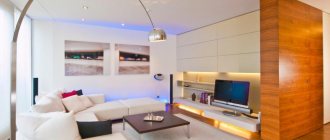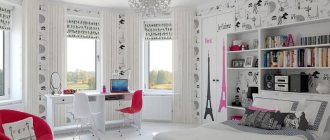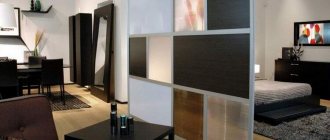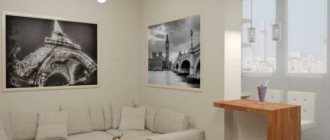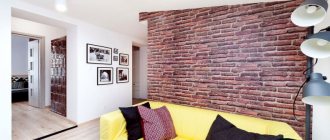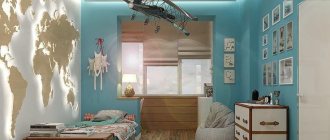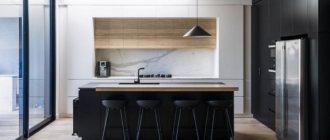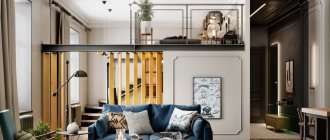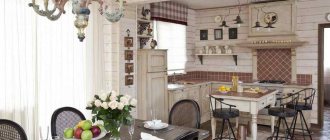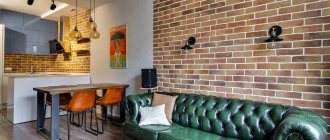Choosing a desk for a student is not an easy task. Often, parents focus exclusively on its cost and size, forgetting about such important factors as design, functionality, spaciousness, and convenience. But they play an important role in the academic performance and development of a child’s creative potential. Not only that, home writing furniture offers a wide range with a variety of styles, shapes and sizes. Let's talk about this in more detail.
Optimal sizes
The design and dimensions of the desk directly affect the physical development of the young body: the formation of posture, distribution of the load on the neck and back, and vision. And first of all, when purchasing this piece of furniture, you need to focus on the correct fit. The optimal height is quite easy to determine:
- the height of the tabletop should correspond to the level of the solar plexus of the child sitting at the table;
- the distance between the table top (from the bottom edge) and the knees should be within 10-15 cm;
- the elbow of the lowered hand of a child sitting at a desk should be approximately 5 cm below its plane;
- the optimal length of the tabletop is at least 1 m;
- if a child at the workplace puts his hands on the table, his shoulders should be in a normal position - no higher, no lower than natural height;
- All necessary items should be freely placed on the table: notebooks, textbooks, stationery. The optimal width of the workspace is from 80 to 100 cm. If you have a computer, then the distance from the eyes to the monitor should be 40 cm;
- The child’s legs should also be positioned freely: the optimal size of this zone is 50 x 50 cm.
Desk for a schoolchild: a variety of styles and shapes
Rectangular table
The rectangular model is a classic that fits perfectly into any interior. For a compact room, it is better to choose a table with a bottom shelf and side one-sided drawers, without an add-on.
On a rectangular tabletop it is very convenient to organize a place for writing, placing a laptop or computer.
Computer desk
A traditional computer desk is not the best option for a student, since such models do not provide space for writing. Give preference to models that will combine a regular desk with computer parts: a retractable panel, a compartment for a system unit, a niche for a monitor with shelves, etc.
Corner desk for schoolchildren
The corner model is perhaps a priority for a small children's room (area 12 sq. m), as it occupies the most unclaimed space in the room (corner), thereby not cluttering up the space.
A full-fledged corner with spacious drawers, an add-on, and elements of a computer desk is perfect for a small room. A simple countertop with shelves and drawers located underneath would also be a good option.
Table transformer
If your plans include long-term use of the desk (from grades 1 to 11), then it is advisable to buy a transforming table that allows you to change the height, dimensions, and inclination of the tabletop. Also sold are transformable tables with a superstructure made similar to a rack with adjustable shelves.
Built-in table
Today, modular and built-in furniture, distinguished by its high functionality, is very popular. This item is a real helper in organizing a growing child’s room.
This could be a whole multi-tiered island, with a work or play area at the bottom and a bed at the top. The desk here is placed either in the center of the lower tier, or in one of the side walls; the second is made in the form of a spacious bookcase.
Material selection
The desk can be made of natural wood, chipboard, MDF, plywood, pallets. The choice is determined by technical characteristics and price. Each material has its own unique properties, which should definitely be taken into account when making your own:
- Tree. Boards are valued for their high strength, durability, and environmental safety. Tables of any variety are made from wood. However, this type of raw material requires additional processing and, moreover, is classified as expensive;
- Chipboard. A more affordable material, but it is not suitable for making transformers. Chipboards do not withstand the load at fastening points well. Moisture that gets inside causes swelling and deformation of the slab;
- MDF. Compared to chipboard, this material is more expensive, but at the same time it has higher technical properties (which is much preferable for a desk). MDF is characterized by a beautiful laminated coating, moisture resistance, and environmental friendliness. The fasteners in the slabs have a long service life;
- Plywood. The material is distinguished by its reasonable price, light weight, and relative reliability. In a plywood desk, components can be replaced and repaired if necessary. But working with such raw materials requires skill and special tools;
- Pallets. Wooden pallets are suitable for the manufacture of only classic structures. It’s easy to create a rectangular tabletop, strong sides, and shelves from them. The advantages of this material include low financial costs, environmental friendliness, strength, and ease of processing.
When making an exclusive tabletop model, you can use thick tempered glass.
Chipboard
MDF
Furniture panels
Pallets Plywood
Materials
When buying a desk for study, special attention should be paid to such factors as safety, wear resistance of the material, and ease of maintenance.
Chipboard is a durable, strong material that is used in the production of cabinet furniture. This option is optimal in terms of good quality at a low price.
Laminated chipboard is not the best solution for school furniture. Although this material is cheaper than chipboard, after a couple of years of use it can release toxic substances. Moreover, furniture made from chipboard quickly loses its aesthetic properties.
MDF is a material that is practically not inferior in appearance and quality to solid wood, but its cost is much lower. Safe, strong, durable material can be selected in any design and color; it perfectly imitates a smooth or wooden surface.
Solid wood is a presentable, environmentally friendly, but quite heavy and uneconomical material. If your budget allows you to purchase a desk made of natural wood, it is still better to buy it for a high school student, so as not to regret later about scratches or marks from a felt-tip pen on an expensive tabletop.
Plastic is not often found in the manufacture of desks. A plastic table for a schoolchild will not last long: the surface of the tabletop quickly deteriorates, so it is better to buy such a model for the first time for a first-grader, and then purchase a more reliable option. But in any case, be sure to make sure the quality and safety of the plastic table material.
Advantages and disadvantages
White desks are an original solution that combines beauty and functionality. This design technique allows you to radically change the aesthetic perception of the room, giving it light and a special status.
In addition to the pleasant appearance, hinting at the well-being of the owner of the house, white desks:
- zone the workplace, clearly marking its boundaries;
- they accentuate each item on the surface of the tabletop, so you won’t be able to lose something you need while working;
- recognized as comfortable furniture, in most cases equipped with excellent functionality;
- are a rational organizer that contains all the items necessary for work separately in a special, user-friendly system;
- are considered a bunch of individual furnishings.
White desks have a number of advantages. They:
- can be made from materials of different origins, including natural, artificial raw materials and their combination;
- depending on the type of material and production method, they differ in surface texture and degree of solidity, so they can pull different furnishings to the desired level;
- have a large assortment of manufactured models of varying degrees of design complexity and functionality, allowing them to be successfully combined with different styles of interior composition;
- based on the features and safety of the design, they can be purchased for adults and schoolchildren;
- thanks to the shade, they visually change the space of the room, giving it spaciousness;
- They are distinguished by a variety of sizes and shapes, which makes their location convenient in standard rooms and non-standard rooms;
- are an independent workspace or an integral part of an ensemble that separates the work area from the rest of the room;
- Based on the complexity of the design, the presence of additional blocks, the prices of the components differ in cost, so you can always find the best option, taking into account your own preferences and the available budget.
In general, almost any white desk can be a good solution for the style of the room. It can be placed against the wall, mounted into it or placed in the center of the room. Often the design involves special placement near the shelving. However, with a lot of advantages, not every model is worthy of purchase. This is due to the negative nuances of this furniture.
White color looks elite, but it is quite demanding to care for. Any, even the slightest, dirt is visible on it. The problem is that it is not always possible to remove stains that accidentally fall on the surface. Not every product can remove them without damaging the texture.
Sometimes after cleaning with chemicals, traces of abrasions remain, the paint wears off, and yellowness appears. Mechanical damage is especially noticeable on the surface of a white table: scratches, cracks, chips are filled with dust, which deprives the furniture of its premium quality.
Besides this, there are other nuances:
- due to the shade, the use of furniture should be gentle;
- the table itself, without shade support, looks isolated;
- care for this product is more regular and especially delicate;
- such a table does not always match furniture of a different color;
- it does not look solid in budget models, so it simplifies the situation;
- a quality product is expensive.
Functionality and equipment of a desk for a schoolchild
An important criterion in the design of a desk is functionality. Therefore, make sure that it is equipped with a sufficient number of drawers, a shelf at the bottom for a briefcase, and a comfortable footrest.
If you have a computer or laptop, choose a model with a compartment for the system unit, a corner niche for a monitor or laptop. An additional plus is the built-in bookshelf. See more school table options here.
Carefully consider the placement of the table with the add-on. It is best if it is a corner or semi-corner model with one-sided shelves.
Important! Any workplace structures should not obstruct natural light. Additionally, place a couple of adjustable lamps here for the most comfortable activities in the evening.
When buying a table, do not forget to choose a suitable chair with an anatomical back that supports the correct (natural) curve of the spine, and is also adjustable in height. Avoid models with armrests - they can harm your child's posture.
Step-by-step instruction
Making a desk for a schoolchild with your own hands involves several successive steps. Following the instructions makes the assembly process easier and results in a strong, attractive product. Creating a standard table with a rectangular tabletop and side drawers begins with measurements, drawing a sketch, and drawing up a design diagram.
Create a drawing
In order to correctly draw up drawings and diagrams, you need to decide on the dimensions of the future product, since all other parameters depend on its width, height and length. The table for an adult has dimensions: 500 x 750 x 700 mm. These standard numbers can be changed individually. A study table with a width of 600 mm and a length of 1200 mm is suitable for a child's room. The height of the structure depends on the height of the child:
| Height, cm | 85 | 100 | 115 | 130 | 145 | 160 | 175 |
| Width, mm | 340 | 400 | 460 | 520 | 580 | 640 | 700 |
For schoolchildren, a tabletop adjustable in height and inclination is preferable.
The choice of table type depends on the following factors:
- room area;
- placement of furniture;
- personal preferences.
Having decided on the type and dimensions of the product, a detailed drawing is displayed on paper indicating the dimensions of the main and additional parts. The diagram includes information about fastening points and the location of fittings.
Preparation of materials
At the next stage of work, cutting of the material is done. The calculated dimensions of the tabletop, side racks, back wall, and shelves are transferred to the wood panel. For this you need a tape measure, a corner, a pencil. When using a drawing, it is important to maintain the scale for all structural elements. Next, using a jigsaw, cut out the parts along the intended contour. On each of them the places of future fastenings are indicated. Holes are drilled at the designated points.
Assembly of the structure
After the components of the product are ready, proceed to installation. Bolts, screws, and dowels are used to connect parts. The sequence of assembling the desk looks like this:
- The bottom shelf is attached to the central and side panels.
- The top shelf is mounted in a similar way.
- The back wall is fixed to two vertical posts.
- The second side of the table is attached to the back plate.
Furniture dowels are coated with glue for better fixation and driven into the grooves using a rubber mallet.
Tabletop installation
The table cover is mounted after the supporting frame of the structure is ready. Holes are made in the upper end of the sidewalls into which dowels are fixed. The same blind recesses are drilled into the tabletop itself from the bottom side. The holes on the horizontal and vertical elements must clearly coincide so that the geometry of the table is not disrupted. After this, the top panel is put on wooden dowels and the position is secured with a rubber hammer.
Making a table for a laptop with a cooling system with your own hands
The final stage
If MDF was used to make desks, then no additional surface treatment is required. It is enough just to cover the end of the slab with veneer. A desk made of wood needs a protective coating and decoration to extend its life and improve its appearance. Before applying the finishing layer, the wooden surface is coated with drying oil and stain. These products will protect the material from deterioration under the influence of moisture, sun, and fungi.
The decorative design of the table depends on the style of the interior and the taste of the master. A homemade piece of furniture can be coated with clear or tinted varnish, or painted in a specific color. The product is applied to the surface twice. To give the product an original look, decoupage, artistic painting, appliqués, and colored polymer films are used. These techniques are easy to learn and apply at home.
Making simple home furniture with your own hands is not at all difficult if you have carpentry skills. A custom-made desk model guarantees durability and the desired appearance. A product with given dimensions fits perfectly into the overall interior, and the selected decor, taking into account personal preferences, allows you to make the furniture unique.
Desk for two
If two schoolchildren live in a room, then each of them must have a separate workplace. In this situation, consider several options for a desk:
- symmetrically arranged paired furniture. Two rectangular or corner tables placed in opposite parts of the room are what is needed for coordinated, independent work of both children.
- a rectangular elongated table along the wall is also suitable for schoolchildren, only if they do not crowd each other. It would be good if there was a partition between the two halves in the form of drawers at the bottom, shelves or a built-on rack.
- a tabletop that divides the children's room from the window into two parts. This solution is suitable for a spacious room. The optimal width of the structure at which children will feel free is 1.6 m.
- An L-shaped desk for two is comfortable, practical, functional and economical (in terms of saving space).
Note: if the tabletop is on the same level as a wide window sill, place the table close to it. You can place books or stands with stationery on the windowsill.
Criteria for choosing a table for a schoolchild
- Safety: environmentally friendly materials, no sharp corners, reliable fastenings.
- Convenience and comfort.
- Functional content and size. For comfortable work, the tabletop must be more than 1 m long and 0.6-0.8 m wide. To free up space, additional elements are important: cabinets, shelves, racks.
It is important that the student himself participates in choosing a desk. If he likes the workplace, then he will enjoy studying!
Particular attention should be paid to the organization of the first-grader’s workplace. Standard desks have a height of 750 mm, and for a child 6-8 years old this is a lot. Therefore, a growing workplace for a primary school student is what is needed. In this model, the height can be adjusted so that a beginning student is as comfortable as possible.
The chair on which the student will sit during classes also plays an important role. Before you know it, your baby will turn into a teenager! I don’t want to buy a chair for one or two years.
An excellent option would be a growing wooden chair. In this model, you can adjust the height of the seat and footrest, and the back supports the anatomical shape of the spine.
Correct fit
- The tabletop is at the same level as the solar plexus.
- The elbow of a straight lowered arm in a sitting position of a schoolchild is 50 mm below the surface.
- The knees in a sitting position are bent at an angle of 90°.
- The distance from the upper thigh to the working surface is 150 mm.
Desk for a schoolchild: a creative approach to organizing the workplace
Studying can become much more interesting if the child is surrounded by interesting objects and creative furniture. You can come up with anything - depending on how much your imagination is enough.
Decorate the area around the table with your child. Self-drawn pictures, interesting photographs, original watches are great ideas for this purpose.
The part of the wall to which the desk adjoins can be decorated in an unusual and useful way by installing a fiberboard panel or a chalk board here. Now it’s easy to fantasize about the design of your work area, supplementing it with calendars, notes, motivational quotes, drawings and other little things.
Place clear glass on the table that matches the size of the tabletop. Under it, the things the child needs will always be in order and in sight - drawings, study materials, a calendar, notes, etc. In addition, this is excellent protection against possible damage.
More examples of school desk design are presented in the following photos.
Required Tools
After choosing the appropriate material for making a desk with your own hands, you need to assemble a complete set of carpentry equipment. In addition to general tools, you may need specific accessories that help you process a particular type of slab. The list includes:
- screwdriver;
- screwdrivers;
- hammer;
- drill;
- jigsaw;
- level;
- roulette;
- corner;
- pencil.
Creating original round tables with your own hands, tips for craftsmen
When preparing tools, you should take into account the features of carpentry. So, for the work you will need a certain type of hammer - a rubber mallet. The drill should have a set of drills of different diameters. A construction tape can be replaced with a measuring tape. If the table is made of natural wood, then two machines must be added to the equipment set: for grinding and milling. Installation will also require a variety of connecting parts, fittings, means for gluing and finishing coating. These include fasteners, wooden dowels, plugs for masking fasteners, wood glue, varnish, and paint.
Step-by-step making of a table from boards with your own hands, examples of decor
Desk for a schoolchild in the photo
The choice of a desk for a student should be taken very seriously. It should not only be functional, convenient and practical, but also delight the child with its design and stimulate the desire to study. Then your student will definitely delight you with his success.
Have you already thought about how best to organize a workplace for your student? Share your ideas in the comments.
Types of desks
Before starting work, you need to decide on the type of table, the location of the drawers and its location. After all, the light from the window should fall from the left side so that the writing hand does not obscure the sheet.
The height of the table for younger schoolchildren should be 0.6-0.62 m, and for high school students - 0.68 m. A lower surface threatens to cause curvature of the spine.
The minimum size of the writing surface is 80x50 cm. Examples of photos of a desk for a schoolchild can be viewed on the Internet.

